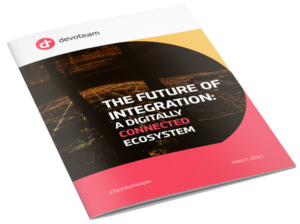Enterprises nowadays deal with complex digital ecosystems, having distributed landscapes and adopting multi-cloud strategies. With APIs becoming the core of integration, API Management plays a big role in today’s enterprises to manage, secure, monitor the APIs, and meet the demands of digital transformation.
TREND 1: Hybrid API Management – Leveraging the best of SaaS and On-Premise
Traditionally, API Management platforms are deployed and fully managed internally: on-premise or in the cloud. They can also be fully managed by a vendor. Each of these options has its own advantages.
A Hybrid API Management Platform leverages the benefits of both SaaS and On-Premise solutions.
Having the Central Management components in SaaS helps unburden operational challenges like software upgrades, scaling and availability, allowing your administrators and citizen developers to focus on the management of the APIs. Having the API Gateway managed internally, On-Premise, or in the Cloud, with close proximity to backend services, still provides the best latency while maintaining the highest level of security, compliance, and data privacy.
Adopting a Hybrid API Management Platform does, of course, not only have benefits, but also some challenges.
The Future of Integration
The fast evolution of modern technologies brings the opportunity to completely reimagine the foundation of enterprise integration. Download the white paper to find out how.
TREND 2: Developer engagement through a strong portal
To productize APIs and engage developers through a lifecycle, we need strong portals that provide end-to-end management from API strategy to API improvement. Many of these management features are now available to API product owners as well as API developers.
Upcoming API strategy management features will let the portal users execute API portfolio, financial, demand, risk, and business relationship management besides strategy management.
Through the API Design features, portal users will be able to design event-driven, streaming, and Asynchronous APIs with OpenAPI, gRPC, and GraphQL support.
After the design is finalized, new API transition features will guarantee the next lifecycle step with change, asset, configuration, release & deploy, validation & testing, evaluation, and knowledge management portal functionalities.
New API Operation management features such as an event, incident, request fulfillment, problem, access, monitoring, and DevOps management will help to maintain API operational excellence.
TREND 3: API management and microservices architectures
A movement to a microservices-based architecture dramatically increases the number of services in your landscape. The benefits of leveraging API management in this context are plenty.
Firstly, from a design perspective, a developer portal can support your internal developers with a catalog of available APIs, documentation, and the possibility to sign up for the usage of the services.
Secondly, from a run-time perspective, API management can take away cross-cutting concerns like authentication, authorization, traffic management, and threat protection from the microservices. Special care needs to be taken around the concept of service discovery. With a large number of services and elastic scalability, the API management solution needs to be aware of the location of the actual back-end services.
Lastly, the API management solution can provide a large amount of insight on the usage of the individual services, from both a functional and operational angle. In other words, which are my most commonly used services, which services are returning the most errors, and which service is having the highest round trip time.
TREND 4: Security features: IAM integration / OIDC flows
APIs are everywhere. For example, when you check your bank account details, buy products online, or check flight details on your phone. It allows businesses to hide the complexity of disparate back-end systems and simplifies the delivery of services to an ever-expanding variety of devices. Additionally, it enables business owners to quickly add new features and do faster innovations allowing business to meet their customer needs and follow market trends.
Today, organizations of all sizes connect their customers, partners, and developers through APIs. It becomes critical to decide how to expose APIs whether it is an internal, partner, or Public API.
API access often requires integration with IAM for authentication. Some organizations use OAuth 2.0 grant flows (auth code, implicit, client credentials), SAML, OpenID connect or JSON Web Tokens (JWT) to validate API consumers. Despite most of the API platforms in the market offer OAuth server capabilities, such capabilities might be limited or not a right fit for all organizations.
Integrating Identity Access Management with the right OAuth Grant Flow and Open ID Connect to API Management Platform does have its own challenges.
To make it easier to adopt these new nice upcoming trend features, Devoteam can help your organization in deciding which Hybrid API Management Platform to select and help you with designing and implementing the features. Click on the button below to contact us.
